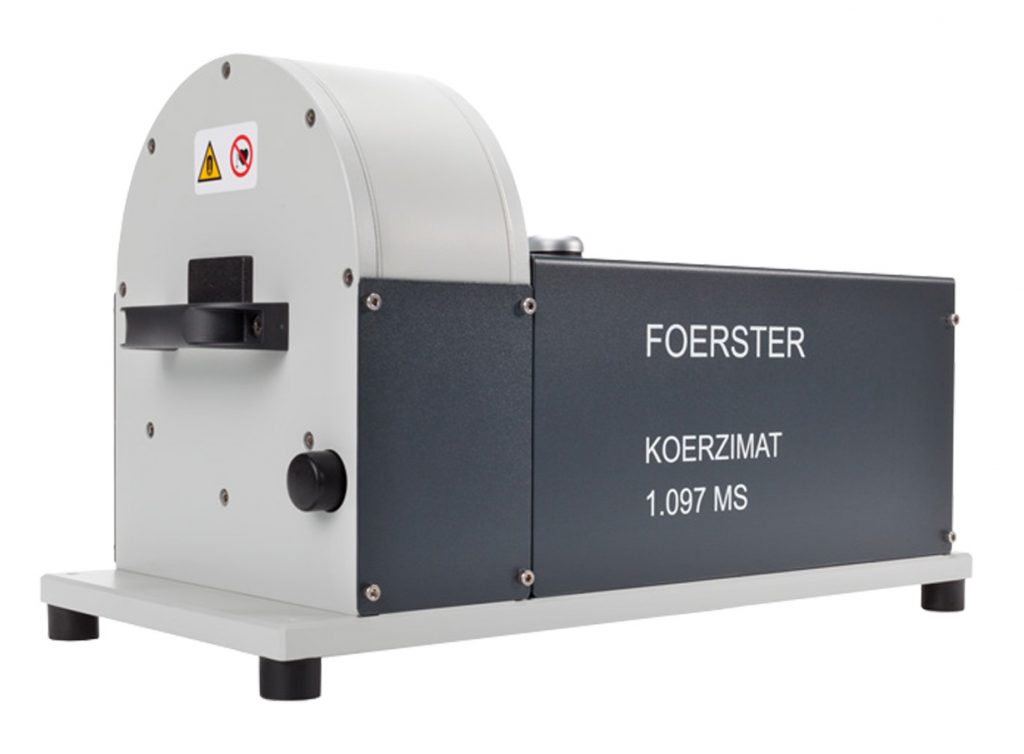
Material evaluation based on magnetic properties
MS Magnetic values such as weight-specific saturation polarization σs and volume-specific saturation polarization Js correlate with numerous important process parameters and material properties in the production of sintered hard metals and powder-metallurgical components.
The KOERZIMAT 1.097 measuring system by FOERSTER facilitates the accurate, automatic, and fast measurement of the weight-specific saturation polarization σs and volume-specific saturation polarization Js. The largely geometry-free measurement is particularly suitable for testing samples with complex shapes. The KOERZIMAT 1.097 MS is used for applications such as controlling the sintering level during hard metal sintering processes and determining the tungsten content dissolved in cobalt as well as the free iron, cobalt, and nickel content in powder / hard metals. The saturation polarization Js in Tesla can also be determined in soft magnetic components of magnetic circuits.
Your advantages at a glance
- Determination of the saturation magnetism in accordance with IEC 60404-14
- Determination of the magnetic phase in austenitic steel
- PC-controlled measuring system
- Geometry-free measurement
- Lightweight, extremely compact design
- Software for controlling individual and series measurements
- Database for collecting measurement data and parameter sets
- Customer-specific reports
- Remote port for automation, data access, etc.
For more information on this product, please go to:
fluxgate-magnetometer.com
Technical Data
| Sensitivity: | 2*10-8 Tm3/kg (MS 26 x 60) 1*10-7 Tm3/kg (MS 31 x 69) |
| Field strength in the air gap: | 1.15 T |
| Measurement uncertainty | 0.5 % of measured value |
| Sensor element:: | Helmholtz detection coils with fluxmeter |
| Power supply: | 100 – 240 VAC, 50/60 Hz |
| Compressed-air supply: | 6 bar (MS 31 x 69) |
Norms
ASTM B886
Describes the method for determining the saturation magnetism of sintered hard metals.
IEC 60404-14
Describes the determination of the magnetic saturation dipole moment jS using moment coils in open magnetic circuits. The method described above is advantageous as it provides the option to perform measurements regardless of the geometry of the sample. It is not required to manufacture special measuring samples.
